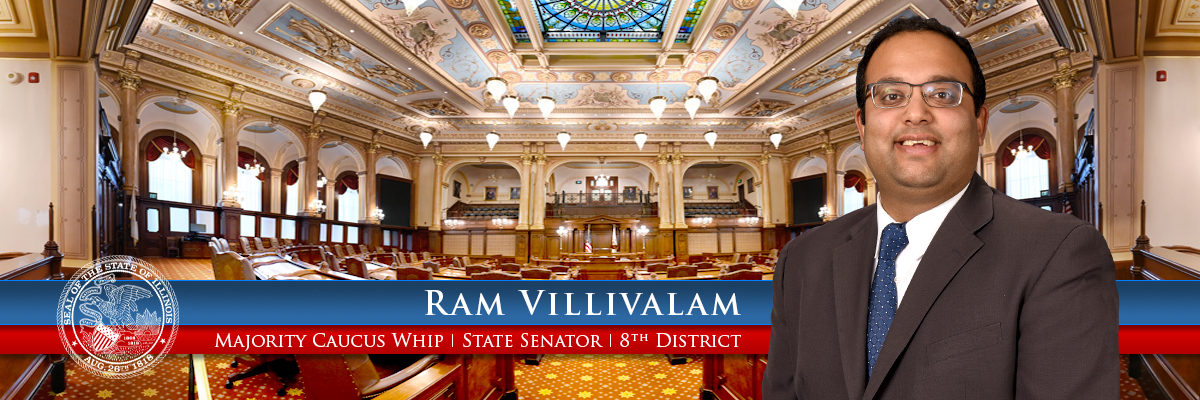SPRINGFIELD, ILL. (Feb. 23, 2021) -- Ill. Rep. Kam Buckner (D-Chicago) and Ill. Sen. Ram Villivalam (D-Chicago) are co-sponsoring a bill to establish more transparent and equitable investment practices for state infrastructure expenditures. Transparency “will help ensure the most beneficial projects are selected every year, and taxpayers can easily understand the reasoning behind them,” according to a new report by the Illinois Economic Policy Institute.
Illinois’ historic capital bill passage in 2019 infused billions into state coffers, but taxpayers don’t currently have visibility into which transportation projects are funded and why. This opaque process erodes trust in government and misses an opportunity to garner the greatest public good from each infrastructure dollar. Meanwhile, our transportation outcomes show troubling trends: an increase in traffic crashes, particularly involving pedestrians, and people struggling to access jobs and services.
There is a better way to achieve greater transportation outcomes and public accountability; it’s performance-based planning, a commitment to using data to compare proposed infrastructure projects. Buckner and Villivalam’s bill would require the Illinois Department of Transportation (IDOT) to use performance metrics in evaluating projects.
“Whether we want to improve a highway or update a train station, there are equity- and data-driven methods to guide our decision making,” said Ill. Sen. Ram Villivalam (D-Chicago), Chair of the Senate Transportation Committee.
Performance-based planning is akin to when automobile shoppers build a spreadsheet to compare one car model to another before purchasing. It’s not a strict playbook, but rather a flexible technique.
“This isn’t about any particular project,” said Ill. Rep. Kam Buckner (D-Chicago). “This is a simple, but consequential change: visibility. Billions of dollars shouldn’t be locked in a black box. We want to ensure we’re being accountable to our taxpayers across the region.”
IDOT has implemented successful reforms to some of its programs in the recent past. For example, IDOT reformed its State Planning and Research program by opening it up to a public call for projects and publishing the criteria it uses to evaluate projects. The state also established a new way to rank and select projects when it received funding from a new freight program created by Congress in 2016. Lastly, the General Assembly included a legislative requirement to transparently evaluate and rank projects competing for the Illinois Transportation Enhancement Program (ITEP), a joint federal-state program that provides funding for bicycle, pedestrian, and other projects that improve transportation. Transparent decision-making can promote access to jobs, improve safety, aid the environment, increase public health, advance equity, and offer multimodal choices.
“What you see on Google Maps is one thing, but the reality on the ground looks different,” said Rochelle Jackson, member of the North Lawndale Community Coordinating Council. “I spent two weeks documenting with a friend broken sidewalks, missing signs, and dangerous intersections in our neighborhood. These aren’t just inconveniences. They make it difficult to get to work, to live our lives.”
Performance-based planning is a best practice within the transportation industry, common in many states including Minnesota, Ohio, Kentucky, and Virginia. The Federal Highway Administration is strongly supportive of the practice.
“States with performance-based project selection systems are required to show how specific economic, safety, or maintenance needs are driving project selection,” said Mary Tyler, transportation policy analyst, Illinois Economic Policy Institute. “A performance-based program for project selection would ultimately give the public more confidence that these massive investments will deliver the best possible returns.”
In an era in which a pandemic further stresses our limited public dollars, the time is right for honest conversations. The stakes are high.
“Transportation investment is one of best tools Illinois has to attract and retain businesses to our state, but we can't know which projects produce the best benefits without measuring how these projects impact economic growth, improve access to jobs, or reduce the costs of transportation,” said Tom Kotarac, senior vice president, Transportation and Infrastructure, Civic Committee of the Commercial Club of Chicago.
“I have lived next to roads like Pulaski, Cermak, Ogden, and Cicero, and there is a stark difference between walking and biking on these roads compared to other roads in Chicago. These differences impact the livability of my neighborhood and at times, severely impacted my mobility,” said Chicago resident Ruth Rosas.
Success looks different in different places. That’s why Buckner and Villivalam’s bill does not require IDOT to evaluate projects across the state the same way. Metrics will and should vary by geography.
“We want to make sure that every project is the best it can be at solving any given transportation problem in any part of the state, whether that is access to jobs, improved active transportation, or better freight connections,” said Audrey Wennink, director of transportation, Metropolitan Planning Council. “The beauty of performance metrics is that they allow us to get the most benefits out of our public dollars.”
Better infrastructure helps Illinois residents live better lives. Roads, bridges, trains, sidewalks, and bike lanes impact how people spend their time, and ultimately their access to opportunities. We can do more to improve people’s lives through transportation access and reliability by accounting for equity when making transportation decisions.





